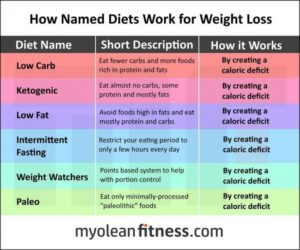Flexible Dieting Vs. The Keto Diet
These two diets are growing in popularity, so much so, that the mainstream is now picking up on them. Especially the keto diet which continues to gain steam. Whereas flexible dieting (IIFYM) is still building a notable audience.
Yet, the main principles of each one have existed for quite some time. Flexible dieting is based on macronutrient ratios which bodybuilders and fitness professionals have been using for two decades at least.
While the keto diet is relatable to the Atkins diet and although many contests this. They are eerily similar, and although this is watering these two approaches down. It’s important to understand that we are merely refining these diets, making them more sustainable.
With that said, here is how the two diets stack up against one another. Which is more useful for your lifestyle?
What is Flexible Dieting?
Flexible dieting is a relatively new nutrition concept, which focuses on tracking the macronutrient composition of foods in order to achieve one’s desired body shape. What differentiates flexible dieting from other diets, is that it does not restrict food groups.
Yet, it rather permits the consumption of all foods so long as the food product chosen adheres to the individual’s set macronutrient targets.
The diet is typically moderate in protein, with around 2.5g of protein per kilogram of lean muscle, with moderate amounts of fat and carbohydrates which make up the remaining calories in order to achieve their desired body composition.
However, theoretically, flexible dieting can be used with any kind of macronutrient breakdown so long as those macronutrients are accounted for in the individual’s daily totals. In this way, flexible dieting is not a ‘diet’ per say, but rather a system of dieting.
As mentioned before, the concept originally gained popularity with bodybuilders who were becoming tired of inflexible and restrictive dietary practices during contest preparation.
Rather than adhering to a rigid meal plan, bodybuilders would track their daily protein, carbohydrate, and fat intake, which enabled them to enjoy a wider variety of foods and better conform to their nutritional requirements.
Have Your Cake and Eat It Too!
The premise of flexible dieting is that the body does not differentiate between individual foods. There are no ‘good’ or ‘bad’ foods, but rather what is important is the macronutrient composition of each food.
For example, if I wanted, I could eat a bowl of whole wheat pasta, and this would be equivalent to me eating a pop tart, so long as they both provided the same amount of carbohydrate, as they would both break down the same way in the body.
Provided the carbohydrate, fat, and protein content of the foods I select fit within my daily macro targets, the remaining foods I consume are made at my own discretion. Soley based on personal food preference, as opposed to adhering to a strict meal plan.
What Else Does the Diet Require?
If you wish to follow flexible dieting, you’re also required to track your daily fiber intake, as this encourages consumption of wholesome and fresh, plant-based foods. Not only will this assist in meeting your daily fiber requirements, it promotes thermogenesis and digestive health.
Consuming adequate amounts of fiber also increases the likeliness of you adhering to the daily nutrient reference values for all the essential micronutrients.
As a general rule, I advise flexible dieters to first meet your overall caloric and macronutrient needs by including a wide variety of ‘nutrient dense’ foods.
While the basic concept of flexible dieting is rather straightforward, the importance of vitamins and minerals and their various functions within the body of the often overlooked.
This can be achieved by consuming plenty of fresh fruits and vegetables, bread, grains and cereals, dairy and dairy alternatives, nuts & seeds, as well as lean red meats, poultry, seafood, eggs and various other protein sources.
For any vegetarians wanting to follow flexible dieting, it’s important to include the highest quality plant-based proteins, specifically soy-derived products such as tempeh and tofu.
This is due to their amino acid profiles offering a superior/profound effect on muscle protein synthesis compared to other plant-based protein sources.
Once these basic needs are met, you can consume calories from more processed take away foods.
The Key to Flexible Dieting
To begin flexible dieting, you must first determine your total daily caloric intake, along with accurate macronutrient ratios, which are specific to your desired physique or sporting goal.
Caloric intake and macronutrient ratios can be calculated by a health professional such as a Dietitian, Nutritionist or another suitably qualified nutrition expert.
IIFYM.com has a fantastic macronutrient calculator that can provide a great starting point for determining your macronutrient breakdown based on your goals. My website also offers a variety of flexible dieting coaching programs.
These are specific to your physique or sporting goal, and can also provide you with a semi-custom diet plan to help you get started with flexible dieting as you begin to learn how to track your macronutrients.
The Pros and Cons of Flexible Dieting!
As flexible dieting does not prohibit the consumption of specific food groups or food types, including takeaway foods.
The temptation to consume more of these junk style food types is often greater. For a variety of reasons, processed, take away foods are more energy dense than an equivalent home cooked version.
Food manufacturers and restaurant owners want their products to taste good to encourage repeat purchase, and the addition of fats and sugars are often necessary to increase the shelf life of packaged goods.
Thus, flexible dieting with the inclusion of more processed foods typically limits the total volume of food able to be consumed in a day, which could possibly lead to feelings of increased hunger and make the diet more difficult to adhere to.
However, this is usually a concern for those in a calorie restricted state and can be avoided with careful planning.
Abusing the freedom
Many people will often misinterpret flexible dieting as a license to consume as much processed “junk” food as they like.
While the basic concept of flexible dieting is rather straightforward, the importance of vitamins and minerals and their various functions within the body that are often overlooked.
Including the production of hormones, energy metabolism, digestion, immune function and overall health.
This being said, I believe that having a knowledgeable nutrition coach or educational resource can help flexible dieters better adhere to their micronutrient requirements.
Tracking Foods & Eating Out
If you are new to flexible dieting, familiarising yourself with the weight of food and counting macronutrients intakes can be time-consuming and overwhelming. However, there is a range of books, mobile phone apps and online resources that can simplify the tracking process for you.
Easy Diet Diary is a great mobile app for Australian consumers and My Fitness Pal, which contains over 5 million food products is a good option suitable for users worldwide.
While flexible dieting allows greater food diversity, it can be challenging to find restaurants that provide foods macronutrient information.
For restaurants that do not display nutritional information, it can become difficult to know exactly what you are consuming and how to track mixed meals.
I could argue, however, that even if the nutrition information is listed, it’s not always guaranteed the accuracy, as the chef’s main concern is more likely about ensuring the food being served tastes great and unlikely to be weighing out exact measurements of ingredients.
With that said, here’s how to best approach eating out while flexible dieting.
Diet Selection & Macronutrient Variance
Similarly said, I could also argue the accuracy of daily energy intakes for any dieting strategy, as the macronutrients listed on packaged food products have a 20% variance, so knowing the nutritional value of a food doesn’t necessarily ensure 100% accuracy.
If a restaurant does not list the macronutrient composition of their meals there are two simple ways to estimate your intake.
1) Input each individual ingredient in the food along with the amount you believe was in the dish. While tedious, this can work quite well for the seasoned flexible dieter. 2) Search food databases for other similar dishes and take the average of the macronutrient breakdowns you find.
The key positive to flexible dieting is that it encourages food variety and allows for the inclusion of foods you enjoy and flavors you love.
This is important because it means you are far more likely to adhere to the dietary protocols in a calorically restricted state. Research shows that the most successful long-term dieting strategies are those that permit adherence and are sustainable in the long-term.
Part 2. Keto Diets
How is Flexible Dieting Different to a Keto Diet?
While many people view flexible diets and keto diets as mutually exclusive, that isn’t necessarily the case.
While it is true that most flexible diets allow for a moderate or even high carbohydrate intake, and keto diets are very low in carbohydrate, you can still follow a keto diet while flexible dieting. Simply by tracking your macronutrients, just ensuring that you consume a low carbohydrate/high-fat macronutrient breakdown.
The main difference between traditional flexible diets and keto diets is that a keto diet is a very high-fat diet, moderate to low in protein and very low in carbohydrate.
This causes a shift in primary metabolic fuel source from carbohydrates to fats. It also alters fat metabolism so the body produces compounds known as ketone bodies in the liver which we can use as energy in tissue like skeletal muscle and more importantly, brain (2).
To give you a short rundown on how this works, under normal conditions, the brain would exclusively use glucose for energy, but in a keto state, the brain will shift to using ketones as a fuel source (i.e. aceto cetate and beta-hydroxy buterate), in order to spare blood glucose for essential tasks such as red blood cell metabolism (which can only use glucose as fuel since they lack mitochondria).
Keep in mind that even with zero carbohydrate intakes, the liver can still produce about 120g of glucose per day in a process called gluconeogenesis (GNG) for essential tasks from substrates like amino acids and other gluconeogenic metabolites.
Why are Carbohydrates Viewed as the Bad Guys?
Diets which include carbohydrates are often viewed as less than optimal for achieving a desirable body composition.
Why might you be wondering? Well, this is often due to the fact that consumption of carbohydrate can over time, lead to insulin resistance through frequent insulin secretion.
…people have made large leaps of logic here, they also point out that in keto diet, carbohydrates are not being used as fuel, whereas fats become the primary fuel. Their logic is, eat more fat, burn more fat.
Insulin is a hormone that is released when blood glucose rises and shuttles glucose into various tissues including muscle and fat.
As a result of this, insulin is frequently referred to as a storage hormone and thus many people have made recommendations to avoid carbohydrates at all costs.
Carbohydrates and Insulin: Are They the Primary Cause of Body Fat Gain?
Well yes, carbohydrates do increase insulin, and insulin is a storage hormone, so I can see how it could be easy to point the finger at carbohydrates as being the primary cause of fat gain as opposed to an overall caloric intake.
Yet, people have made large leaps of logic here, they also point out that in keto diet, carbohydrates are not being used as fuel, whereas fats become the primary fuel. Their logic is, eat more fat, burn more fat.
While that is true to a certain extent, it’s not quite that simple. They have missed the fact that by limiting carbohydrate to very low levels in the diet, you are also typically going to restrict calories as well.
In fact, many people have become so passionate about low-carb lifestyles that they become keto-zealots, rather than considering the science of what actually makes a fat loss diet successful. This debate is a major factor as to why keto diets are such a hot topic right now.

Image Source: Myoleanfitness.com
Are Keto Diets Superior to Other Fat Loss Diets?
There are several studies that keto-zealots often point to in order to support claims of a keto diet being superior for loss over diet strategies such as flexible dieting.
For example, a recent meta-analysis published in 2013, compared very low-calorie keto diets (VLCKD) to low-fat diets.
They found that individuals who were assigned to the VLCKD were able to achieve greater weight loss than participants in the low-fat groups.
What this study does not consider is that the research studies selected for inclusion in this analysis did not equate to protein and in some cases even overall calorie intake. So it’s likely that greater weight loss was achieved in VLCKD by default (3).
What I will also draw your attention to is that a keto diet can be more satiating, due to slower rates of digestion, and often what happens is people tend to consume lower calories overall than in low fat, high carbohydrate diet.
So What Does the Science Say?
Guys! When calories and protein are equal, keto diets do NOT seem to offer any additional fat loss benefit compared to an equal calorie, equal protein non-keto diet according to a study published in 2006 in the American Journal of Clinical Nutrition (2).
In this highly controlled study, both groups lost an almost identical amount of weight and body fat. This tells us that for fat loss, you could use either flexible dieting or a keto diet (1,2). I suggest following whichever diet strategy you are best able to stick to long-term.
Pros and Cons of Keto Diets
The major mistake I see made by people who are starting out with a keto diet is failing to adhere to the correct ratios of macronutrients necessary to ensure ketone production.
On a traditional keto diet, carbohydrate intake is actually about 5-10% of total caloric intake, protein is low at ~10-15%, and fats are around 80%.
Currently, the most popular form of the keto diet is a modified keto diet which sees carbohydrate intake at around 5-10% of total caloric intake, protein at 20-25% of total energy intake and fats making up the majority of total calories at approximately 70% of calories.
In a carbohydrate-restricted state, the body calls upon its secondary energy sources, namely fats and proteins in order to function. Here, protein is converted to glucose through the process known as gluconeogenesis in the liver as described previously.
This is why it is important to ensure your protein is not providing greater than 20-25% of your total caloric intake while following a keto diet.
As too much protein results in glucose production and remains the primary energy source, as opposed to fats or ketone bodies.
Abusing the Freedom
The idea of being able to eat plenty of high-fat foods at every meal may sound highly appealing, but this doesn’t come without nutritional consequences!
Eliminating carbohydrates, such as any diet that restricts whole food groups, makes it far more difficult to meet daily micro-nutrient requirements, in particular B- vitamins.
It is important to make sure you consume a wide variety of fresh vegetables, as these are essential for their rich source of fiber, vitamins and minerals, antioxidants and other important micronutrients.
In any case, I would strongly recommend taking a multi-vitamin as well as an iron supplement, especially for those adhering to large caloric deficits, since it is difficult to consume a sufficient iron intake without essentially all your protein sources being provided by lean red meat.
My Recommendations
Any diet that creates a caloric deficit is going to result in fat loss. PERIOD.
When calories and protein are equated, there are many dietary approaches that can all be equally effective for improving your overall body composition (1).
So don’t be mislead by the diet scams promising you rapid weight loss.
Its more than likely that the diet will be highly restrictive and unrealistic in nature, and no sooner do you lose weight, will you have piled the kilos back on once regular foods are reintroduced.
If you prefer higher fat foods in preference to carbohydrate-containing foods, particularly during a calorie deficit, and you believe you will find it easier to adhere to, then by all means, try a keto diet!
If you equally enjoy eating carbohydrates and think you prefer a wider variety of food choices, then flexible dieting may be a better strategy for you. Either way, the most important consideration, whichever dietary approach you choose, is to ensure it is sustainable.
The post Flexible Dieting Vs. The Keto Diet appeared first on IIFYM.
from IIFYM Recipes and Articles – IIFYM http://ift.tt/2DEKm9f
from IIFYM Starter Guide http://ift.tt/2rzUA5T




Comments
Post a Comment